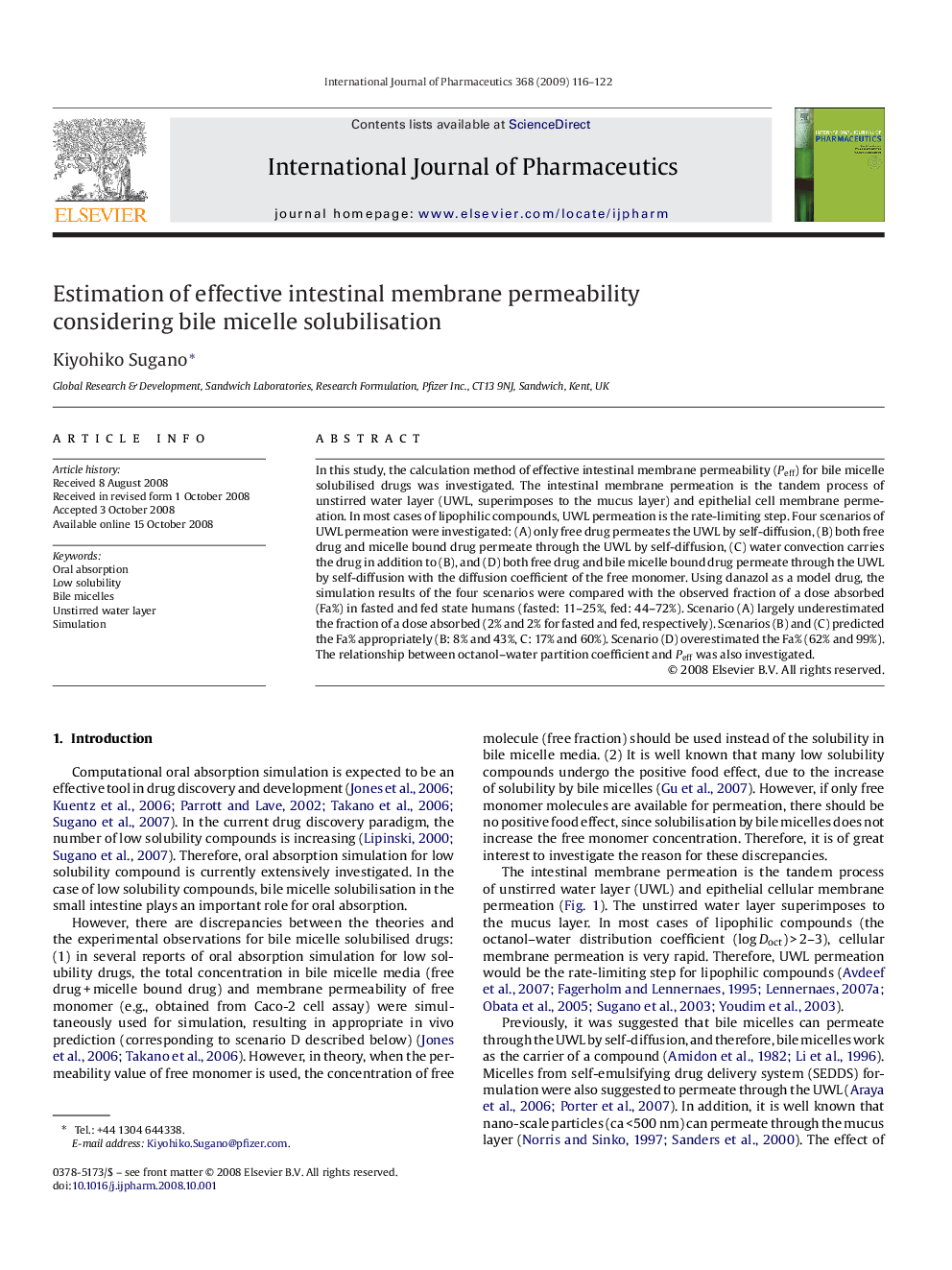| Article ID | Journal | Published Year | Pages | File Type |
|---|---|---|---|---|
| 2504981 | International Journal of Pharmaceutics | 2009 | 7 Pages |
In this study, the calculation method of effective intestinal membrane permeability (Peff) for bile micelle solubilised drugs was investigated. The intestinal membrane permeation is the tandem process of unstirred water layer (UWL, superimposes to the mucus layer) and epithelial cell membrane permeation. In most cases of lipophilic compounds, UWL permeation is the rate-limiting step. Four scenarios of UWL permeation were investigated: (A) only free drug permeates the UWL by self-diffusion, (B) both free drug and micelle bound drug permeate through the UWL by self-diffusion, (C) water convection carries the drug in addition to (B), and (D) both free drug and bile micelle bound drug permeate through the UWL by self-diffusion with the diffusion coefficient of the free monomer. Using danazol as a model drug, the simulation results of the four scenarios were compared with the observed fraction of a dose absorbed (Fa%) in fasted and fed state humans (fasted: 11–25%, fed: 44–72%). Scenario (A) largely underestimated the fraction of a dose absorbed (2% and 2% for fasted and fed, respectively). Scenarios (B) and (C) predicted the Fa% appropriately (B: 8% and 43%, C: 17% and 60%). Scenario (D) overestimated the Fa% (62% and 99%). The relationship between octanol–water partition coefficient and Peff was also investigated.
